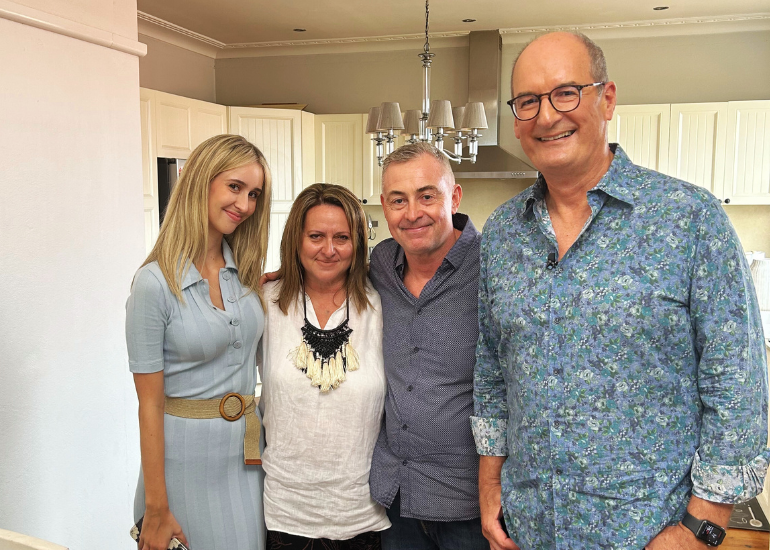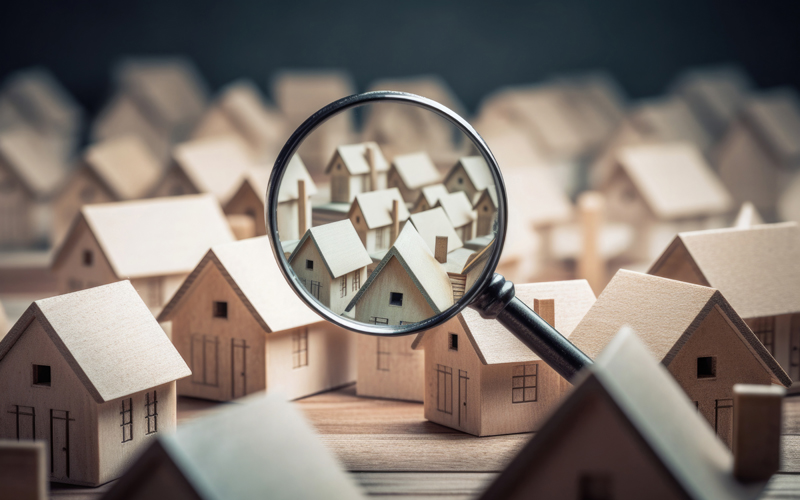- Your Money & Your Life
- Posts
- The stamp duty gravy train is out of control + Aussies in the bunker
The stamp duty gravy train is out of control + Aussies in the bunker
My Money Digest - 1 March 2024

Hi everyone,
Writing this from Perth after interviewing Wesfarmers boss Rob Scott for The West Australian newspaper’s Leadership Matters conference.
Such an impressive leader. Rob is a former Olympic rowing silver medallist (and married to Liz Weekes who won gold in water polo at the Sydney Olympics). He’s humble and a great thinker. I now know where the great Wesfarmers culture comes from… and Wesfarmers share price is at an all-time high.
I love being able to pick the brains of great leaders.
In this week’s newsletter:
Latest inflation figures.
Aussies staying in the bunker.
Property prices start to pick up pace again.
The state governments’ stamp duty gravy train getting out of control.
Private investors are saving the rental market.
Inflation continues to trend down with the January CPI coming in at 0.4 per cent for an annual rate of 3.4 per cent, which was slightly lower than the market expected.
It’s important to remember that January is the first month in the quarterly CPI cycle which skews towards goods inflation and measures very few prices in the services sector. So it’s a bit misleading as the services sector is the worry for the Reserve Bank (its price inflation has been sticky and stubbornly higher than goods).
The “sticky” items not included were education, restaurant meals, hairdressing & household services, vehicle maintenance, recreational services and insurance.
But the good news is the inflation rate is slightly lower than expected and is within the RBA’s 2-3 per cent target range over the last three months (2.7 per cent) and six months (3 per cent).
Inflation is moving in the right direction.
Holiday travel was cheaper in January, along with petrol, clothes, bread and milk. But electricity and fruit & vegetables were dearer.
On the housing side, rents continued to rise solidly, reflecting very low rental vacancy rates. Electricity prices did not spike higher, with the unwinding of the WA electricity rebates to come later in the quarter. And new dwelling cost inflation has not declined further and remained elevated.
This result will not prompt the RBA to change interests rate on 18 March, but they will be watching the economic growth figures for the December quarter due out next Wednesday.

Source: IFM Investors

Source: James Foster - X / @JFosterFM

Aussies stay in the bunker
Summer is meant to be the festive and holiday season where Aussies go out and spend up big… not this year.
It’s another sign of how cost of living, higher interest rates and rising unemployment is hitting household budgets.
Australian nominal retail sales increased by 1.1 per cent over January after falling by 2.1 per cent in December. Economists expected at least a 1.5 per cent rise in retail spending and some as much as 2 per cent.
Retail spending has been volatile over the past three months as consumers brought forward December Christmas-related spending to November to make use of the Black Friday discounting.
The value of retail spending is virtually flat versus September 2023 and growth in retail volumes is negative.

Source: AMP - X / @ShaneOliverAMP

Source: AMP - X / @ShaneOliverAMP

Property values start to tick up again in the big cities
The assumption that interest rates have peaked and rate cuts could be coming in the second half of the year seems to have rekindled interest and demand in the property market.
CoreLogic’s national Home Value Index (HVI) rose 0.6 per cent in February, which was higher than the 0.4 per cent in January and the strongest monthly gain since October last year.
Every capital city and region recorded a lift in values over the month, except Hobart where the market fell 0.3 per cent.
Perth continues to stand out with a substantially higher rate of growth compared to any other region, up 1.8 per cent over the month. Adelaide (+1.1 per cent), Brisbane (+0.9 per cent) and the regional areas of SA (+1.1 per cent), WA and Queensland (both +1 per cent) also show a consistently high rate of capital growth month-to-month.
Although growth rates in Sydney and Melbourne home values have levelled out, the monthly trend has accelerated, with Melbourne emerging from a three-month slump of negative monthly movements to record a small 0.1 per cent rise in February. Similarly, Sydney dwelling values have moved back into positive territory over the past two months after recording a small decline in November and December.

Source: CoreLogic
How state governments are reaping billions from stamp duty and making it harder for home buyers
When property prices rise some of the biggest winners are state governments though their stamp duty river of financial gold. It is a major impediment to buying a property.
I reckon every home buyer has felt the financial trauma of settling on a property purchase and then being staggered by the amount of stamp duty they have to fund. If NSW removed stamp duty, a study this week by research group e61 Institute and PropTrack estimated about 100,000 additional owner-occupiers would move home each year – 25 per cent more than currently move.
The study also found that stamp duty has tripled as a share of income since the mid-1990s and that stamp duty imposes a cost of moving equivalent to around five months of a person’s take-home income. Recent survey results also show that it’s deterring people from downsizing and is generally an unpopular policy.
No wonder. The e61 Institute and PropTrack research calculated:
In Sydney, stamp duty on a median-priced home is equivalent to six months of full-time post-tax income. That is 5.4 times higher than it was in the early-to-mid 1980s.
In Melbourne, buyers need the equivalent of six months of full-time income – a whopping 6.1-fold increase from four decades ago and the largest increase of any city.
Owner-occupiers in Brisbane pay 5.5 times as much stamp duty relative to income as in the early 1980s.
Adelaide, Perth and Hobart have also seen substantial increases in the cost of stamp duty. Stamp duty on a median-priced home is 4.9 times higher relative to income in Adelaide. It is five times higher in Perth, and 6.7 times higher in Hobart.
Housing costs are reportedly holding people back from moving homes, downsizing, changing jobs and even having children.
The most popular housing policy for state governments is to abolish stamp duty. As I talked about last week, that’s what tax reform is all about.
Former Treasury Secretary, Ken Henry, is calling for an increase in the GST to 12.5 per cent in order to abolish stamp duty and payroll tax.
How federal and state governments are responsible for the rental crisis
The facts are clear that while we have a housing rental crisis, private property investors are doing the heavy lifting. Governments seem to complain but do very little in terms of solving the issues.
The most recent data from the Australian Taxation Office shows 2,245,539 Australians or around 20 per cent of Australia’s 11.4 million taxpayers owned an investment property in 2020-21.
Just over 71 per cent of those investors owned just one property and 19 per cent owned two. Around 12 per cent of those investors were aged 65-74 years and the rest pretty evenly spread across all other ages.
You, a relative or friend probably own an investment property and would be annoyed at the criticism you’ve been receiving from tenants and politicians about increasing rents. The reality is that if it wasn’t for you the crisis would so much worse.
Private investors (“mum and dad” investors) provide most rental properties in Australia. If tax policy is changed that makes owning a rental property less attractive, there will immediately be far fewer rental properties available.

Source: Ray White
According to a great research paper from Ray White chief economist, Nerida Conisbee, between 1996 and 2021 there were an additional 1.1 million rental properties provided by investors.
Compare this to an increase of 41,000 homes provided by community groups and a loss of 53,000 rental properties provided by the government.

Source: Ray White
But according to Nerida, rental stress in Australia has been kept low at a global level. An analysis of OECD data has shown that the proportion of households under rental stress is relatively low at 10 per cent. As a comparison, New Zealand, Britain and Spain all have very high levels of stress, exceeding 20 per cent.
While this measure would have increased since the start of the pandemic, the rental shortage is similar everywhere around the world and other countries would have seen similar increases.

Source: Ray White
What is even more interesting is that Australia has maintained this low proportion of rental stress even though we have not built enough new homes relative to our population growth.
France and Germany have maintained rental affordability because they build a lot of homes relative to population growth. New Zealand has built the least which explains their lack of affordability. Australia has also under-built over a long time but has maintained higher rental affordability. It is likely that negative gearing has been a major contributor to this.

Source: Ray White
Many investors rely on negative gearing to make the investment viable and a loss of this incentive would lead to a large number selling. This will reduce the number of rental properties immediately. There are groups that could potentially step in but they are not ready to provide the amount required. In some cases, they are not interested or lack the capability to provide scale.
Historically, state and territory governments have supplied rental housing, however this has been reducing steadily over the last 20 years. Theoretically, this could be reversed, although many of the problems that face private developers would also face the government sector.
Foreign investors have been significant suppliers of rental properties in Australia however Nerida suggests they won’t return in the same way as seen in the last decade. Even if many of the additional taxes we placed on foreign investors last decade were clawed back, restrictions imposed by foreign governments, particularly China, make it difficult to invest in Australia.

Source: Ray White





